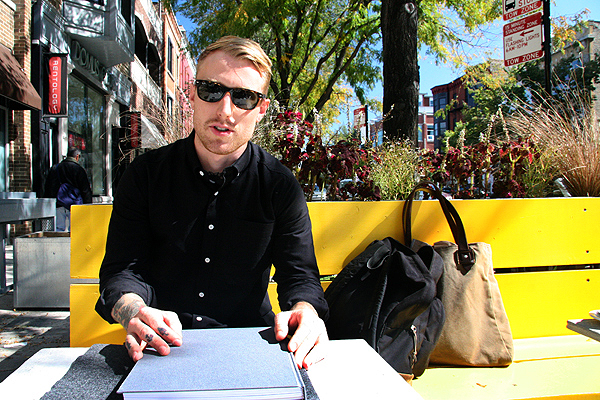
Photographer Daniel Shea
Daniel Shea, 27, is a local documentary photographer that I’ve hired for several Chicago assignments over the last three years. Most recently he shot photos for our story about the Dixon, Illinois, comptroller Rita Crundwell, accused of embezzling $53 million from the town. I often hire Shea for some of the most intense assignments because I know he can capture the realness of the subject while also adding his own aesthetic. In his new book, Blisner, Ill., Shea applies a humanizing effect to a fictional account of a struggling Rust Belt town in southern Illinois. On Thursday night, the Museum of Contemporary Photography, Shea will sign copies of the book and present his work. Below, an edited transcript of my conversation with the photographer.
How did you get into photography?
I went to art school at the Maryland Institute College of Art in Baltimore to study drawing and painting and ended up in the photo department. I received a grant after graduating and fell in love with being on the road and making work about topical, political, social issues.
So you landed in Chicago, how do you feel about the Chicago art scene?
I think Chicago has a really strong independent art scene. There are a lot of opportunities for artists here, so I feel really comfortable in the Chicago art scene. When I moved here there was this kind of “Chicago style.” Brian Ulrich at the time dubbed “Chicagrophy.” He has since has left Chicago, but he was an early mentor for me when I was here.
This summer, you shot the final portrait of right-to-die advocate Jerry Dincin.
That was the most psychologically intense thing I’ve worked on for a magazine. I thought about it more philosophically than artistically because it was a hard thing to plan for. And he is a proponent of [assisted suicide]; he gets to be a martyr to his own cause. I realized that it was an opportunity for him to have closure and I wanted to make sure to do him justice.
I know you’re a music lover. How does that play into your photographic work?
If anything, the philosophy and politics of punk music have had a huge and profound impact on my mentality as an artist. Being an artist in the art world feels to me often like being a punk in the world of the “haves” (that’s my friends quote). I took the punk DIY ethics. For example, I produce these discreet objects [books, photographs, sculptures] that are expensive, but it’s also important to me to also create work that anybody can have access to.
You're showing work from your new book, Blisner, Ill., at the Museum on Contemporary Photography on Thursday. Can you tell us about it?
It’s the account of what happened to a single Rust Belt town in Southern Illinois as it is increasingly de-industrialized. It’s a condensed 100-120-year narrative told in book form. The town itself is fictional, but it’s based on real places and real historical events that happened in Illinois.
Photograph: Megan Lovejoy



